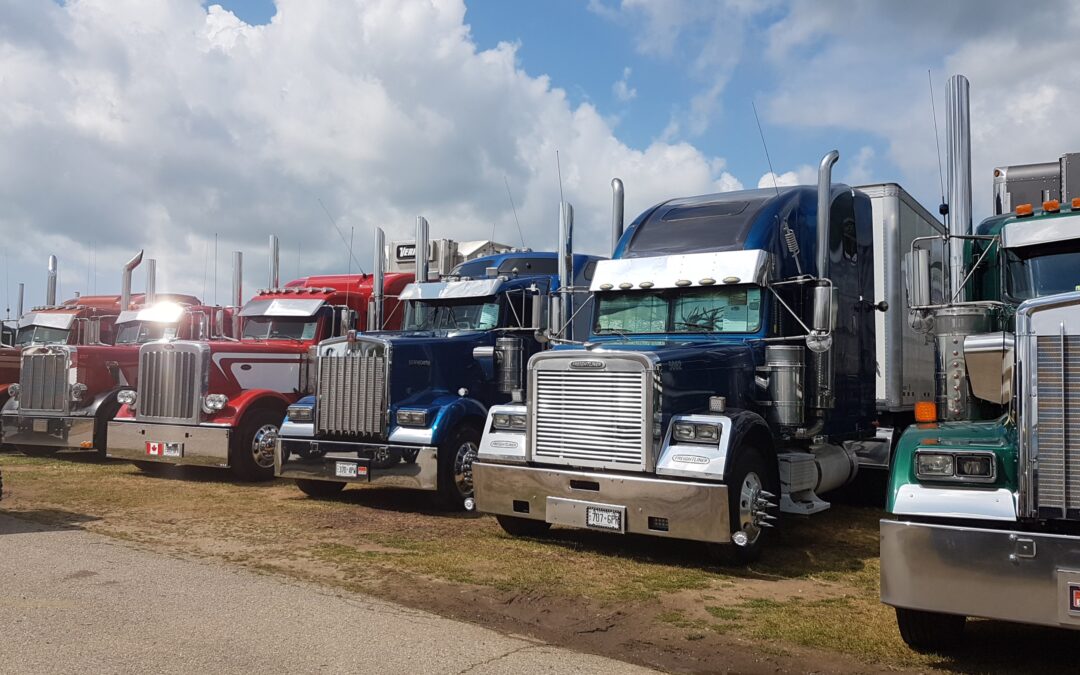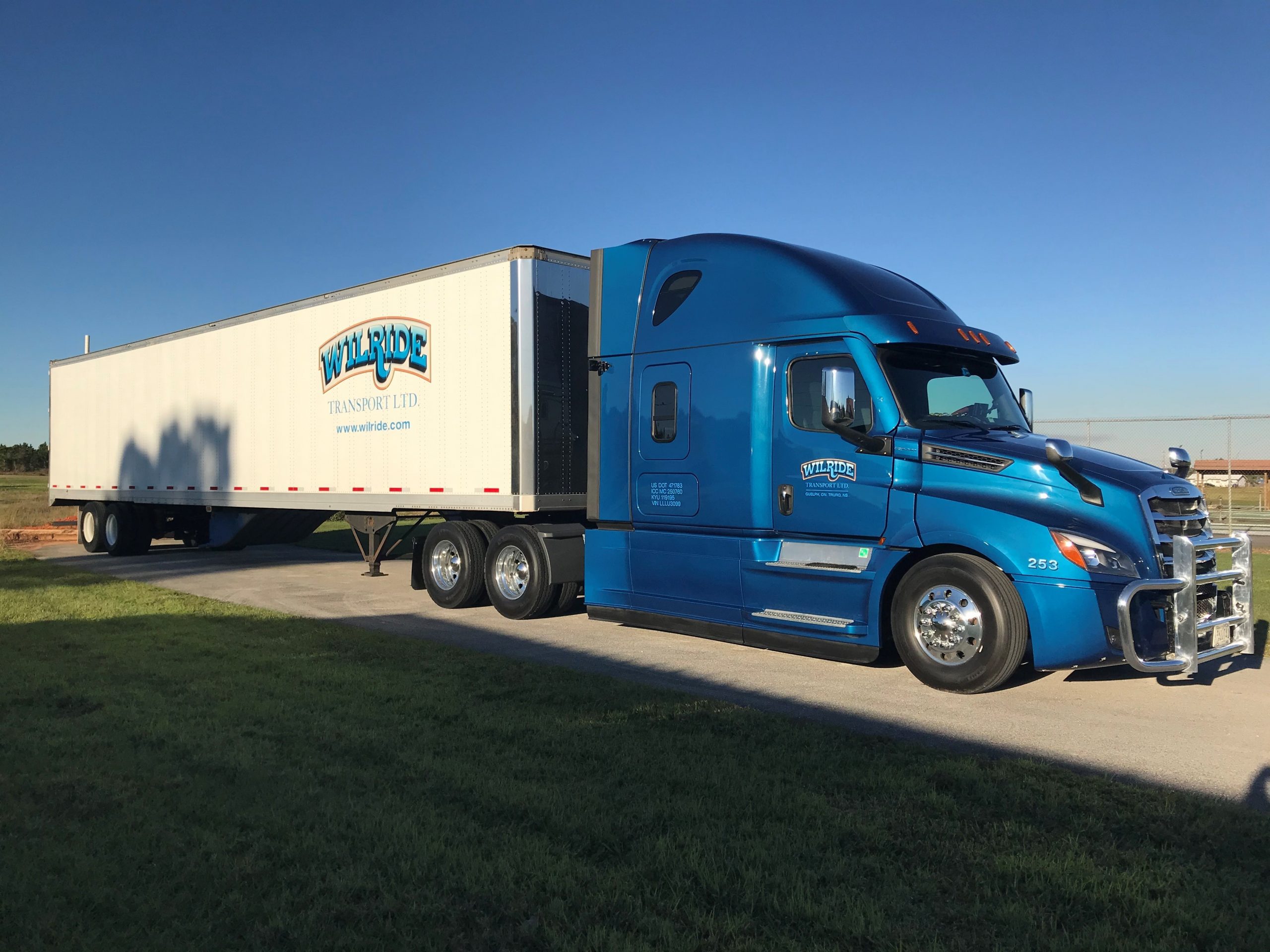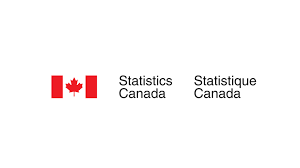
by wtfcanada2015@gmail.com | Jul 22, 2025 | BLOG
A Blueprint for a Barrier Free Future in Canadian Trucking
By Shelley Walker, CEO, Women’s Trucking Federation of Canada
A Historic Gathering for Canada’s Trucking Industry
Last week, WTFC took part in a landmark meeting hosted by Transport Canada, where leaders from across the country united to tackle internal trade barriers and boost productivity industry wide. Canada’s trucking industry drives our economy, yet fragmented licensing systems, inconsistent training standards, and overlooked safety gaps continue to stall progress. To address these challenges, WTFC is championing sweeping reforms anchored by a National Trucking Credential and guided by a gender informed approach to strengthen supply chains, enhance safety, and open career pathways for all drivers.
1. Harmonized Entry Level Training
A single, 220 hour minimum curriculum will eliminate provincial and territorial cross border delays and safety risks. Key elements:
- Core driving competencies and theory based learning.
- Eight hour labour trafficking response module.
- Mandatory Canadian Language Benchmark Level 6.
- Targeted bursaries for women, Indigenous peoples, and recent immigrants.
2. Centralized Safety Rating and Monitoring
Transparency and accountability hinge on unified data and standards:
- Real time, national NSC database.
- One audit protocol enforced coast to coast.
- Publicly accessible carrier safety ratings.
3. Consistent Rest Area Infrastructure
Drivers need safe, reliable stops to manage fatigue and comply with hours of service rules:
- National minimum standards for spacing, lighting, and security.
- Certified alternative parking and rest locations.
- Pan Canadian mobile app displaying real time availability.
4. Uniform Road Standards and Maintenance
Seasonal extremes and uneven construction create bottlenecks:
- Coast to coast pavement and lane marking guidelines.
- Harmonized winter maintenance thresholds and response times.
5. Streamlined Oversize/Overweight Permitting
A single permit process will cut red tape and speed freight movement:
- One OS/OW application accepted nationwide.
- Standardized signage and daylight definitions.
- Codified regulation replacing temporary MOUs.
6. Expanded Weight Allowance Configurations
Avoid costly equipment swaps by broadening approved axle and weight combinations:
- Joint federal provincial review of vehicle configurations.
- Permanent regulatory updates replacing narrow MOUs.
7. Full ELD Mandate Enforcement
Consistent fatigue management depends on universal electronic logging device adoption:
- Mandatory ELD compliance in every province and territory.
- Shared national dashboard for real time monitoring.
8. National Trucking Credential and Labour Mobility
Replacing thirteen licences with one digital “Safety Passport” will unlock coast to coast workforce mobility:
- 220 hour curriculum, challenge exams, and secure blockchain credentials.
- Subsidies to lower financial barriers for trainees.
- Real time verification for recruiters and regulators.
9. Stronger Protections for Temporary Foreign Workers
Ensuring fair treatment and competitive equity:
- Approved Employer Program with rigorous pre-vetting.
- Aligned oversight standards to prevent abuse.
- Mandatory gender based risk assessments.
10. Tackling Hidden Internal Trade Barriers
Beyond licensing and training, we need a full audit of:
- Fuel tax and carbon levy rebate delays.
- Insurance proof of coverage inconsistencies.
- Tolling, weigh station fees, and municipal idling/parking bylaws.
- Duplicative environmental reviews for infrastructure projects.
Embedding a Gender Informed Lens
A modern trucking workforce thrives when women’s needs are front and centre:
- Well lit, lockable rest area washrooms and emergency call stations.
- Confidential, harassment reporting systems.
- Childcare rebates for long haul assignments.
- Harmonized family leave benefits and pregnancy protections.
- Mentorship, leadership, and work life balance modules in the NTC.
- Annual, gender disaggregated data collection on training, employment, and safety.
Call to Action
The WTFC urges federal, provincial, and territorial leaders to:
- Approve funding for curriculum development, bursaries, and digital platforms.
- Pilot the National Trucking Credential and pan-Canadian apps in three jurisdictions.
- Harmonize regulations and enforcement protocols by 2026.
- Commit to transparent, quarterly reporting on safety, mobility, and workforce diversity.
Together, we can build a safer, more efficient, and fully inclusive trucking industry, one unified credential and one gender informed policy at a time.

by wtfcanada2015@gmail.com | Jul 30, 2024 | Career Board
Wilride Transport Ltd. is looking for experienced AZ cross-border drivers to run east coast, mid-west, south and with good time management skills, and a good understanding of the industry.
The ideal candidate for this job has the experience and has the ability to communicate effectively. If you are looking to join a premier transportation company, and become an integral part of results-oriented team send a resume today we would like to speak with you. Send resume to recruiting@wilride.com
We Offer:
- Competitive wage
- Paid drops/pickups, mileage, border crossing, clean inspection bonus, safety bonus.
- Driver referral bonus
- Group benefits/Pension plan available upon hire, no waiting period.
- Reliable, clean, maintained trucks.
- Passengers permitted.
- No/Limited touch LTL.
- Bi-weekly direct deposit
- Pets permitted
- Out of Country coverage Day 1
- Paid Drops/Picks/Clean Inspection/safety Bonus
Qualifications:
- AZ Truck Driver with a minimum of 2 years of cross-border experience.
- Clean Canada wide criminal search and a Resident of Canada
- Satisfactory road test
- Good references
- Negative pre-employment drug test
- Effective Communication skills
- Punctual and reliable
- A clean driving record
Regional Responsibilities:
- Safely transporting goods to and from specified locations according to company deliver schedules
- Maintaining an accurate logbook of driving activities, detailing the number of hours worked, deliveries completed, and rest periods.
- Properly secure goods to ensure that they are not damaged in transit
- Assist using a forklift on our cross-dock when required
- Obtaining signatures from customers upon completion of each delivery to confirm receipt of goods
- Notifying management of any accidents, parking tickets, vehicle damage, and major maintenance issues
- Ensuring that the company truck is always clean and well-maintained
- Complete a successful road test.
By applying to this position, you are confirming you possess either a Canadian citizenship, permanent resident status, or work permit.
Located:
77 Arrow Road Guelph, ON N1K 1S8
Website:
www.wilride.com
We are committed to diversity and inclusion and thank all applicants in advance.


by Fiona Stone | Jan 19, 2024 | Announcement

by wtfcanada2015@gmail.com | Jan 26, 2023 | BLOG
Labour force data released from the latest Canadian Census is disheartening to say the least.
In 2016 barely 3.5% of Canada’s 300,000 truck drivers were women, and now, over six years and enormous efforts later, gains of less than one percent brings that representation to a mere 4.3%.
Before we go any further, a bit about the data. These statistics look across occupations, which the government breaks into classifications using National Occupational Classification (NOC, or NOC codes). This is Canada’s national system of organizing and describing occupations.
It is also important to note that there is a variable when comparing 2016 data to 2022. Statistics Canada is no longer using the same criteria when it comes to male and female representation in the labour force. In the latest statistics “gender” refers to an individual’s personal and social identity as a man, a woman, or a non-binary person. They go on to note that “Given that the non-binary population is small, data aggregation to a two-category gender variable is sometimes necessary to protect the confidentiality of responses provided. In these cases, individuals in the category “non-binary persons” were distributed into the other two gender categories and denoted by the “+” symbol.” The 2022 data is representative of those changes and is referenced as Men+ and Women+. As such, the 2022 data showing 4.3% representation is for Women +, and these numbers are significantly deficient considering that women account for almost half of Canada’s workforce.
Despite the growing list of federal, provincial and industry programs that have tried to move the needle, these gains are minimal at best. Efforts ranging from training scholarships for female candidates, mentorship options, incentive programs, free driving schools with guaranteed placement, to programs targeting school age females, has not moved the needle 1%.
Trucking is not alone as skilled trades also continue to be largely dominated by males. While women have made some progress in the trades, the sectors share significant barriers with inclusion that prevent women from embracing work in these male dominated industries.
In terms of inclusion, the trucking industry is doing well at the more senior levels with Human Resources, Health & Safety, Administration, Finance, and Senior Management. In fact, the latest Census shows that 24.5% of Managers in Transportation (NOC 70020) are Women+. However, gender equity is needed throughout the corporate hierarchy. Representation at all levels is not only critical, but also a great place to start. Inclusion matters. And when representation is a mere 4.3%, that is a problem from an inclusion perspective. We need to create workplaces where women and other diverse candidates can say “I can belong here”. We know part of inclusion is about sharing things that we have in common with others. Most people do not want to be the odd person out or feel isolated in their job or at the workplace.
Consider a time you felt different from those around you. Now, consider the words or images that come to mind as you reflect on that time. Likely, those words or images have a negative connotation, like isolated or awkward to discriminated or harassed.
We, as humans, have a need to be included, a feeling of security, safety, acceptance, and of a workplace that at the very least reflects and includes us. Having female workers and leaders to serve as role models is not only critical to the advancement of women in this industry, but also leads to larger societal impacts on issues like pay equity, gender equality in recruitment and promotion, changing workplace policies in ways that benefit all genders, and in attracting a more diverse workforce.

Photo Credit: Joel Muniz
So, lots to do, how do we get there?
Start with the understanding that nothing can stifle DEI efforts any faster than a work culture that discourages looking for new ways to improve. Leaders need to challenge the caustic “We’ve always done it that way” mindset and create company cultures where women can thrive, have new ideas rewarded and feel included.
Increasing the inclusion and representation of women in this industry should not be a one and done initiative. It is about a culture change. Employers must start by looking inward and examining what they are doing to be an inclusive workplace. And if the old methods aren’t working, take some risks and try something new.
Check in with the women on your team, a recent article by Catalyst found that aside from isolation, harassment, lack of mentoring and career opportunities, women working in male-dominated industries experience higher stress and anxiety compared to women working in other fields.
Organizations are fighting for every bit of available talent out there, and study after study has found that the majority of Canadians would take less pay at a company where they feel respected and included, than remain with one they’re unhappy or unaligned with. Employers of choice make gender equity a company-wide effort that’s not limited to the leadership ranks. At their core, great companies are inclusive throughout.
Notes :
Data was compiled by the Workforce Planning Board of Waterloo Wellington Dufferin. Data source Statistics Canada 2021 Census .












